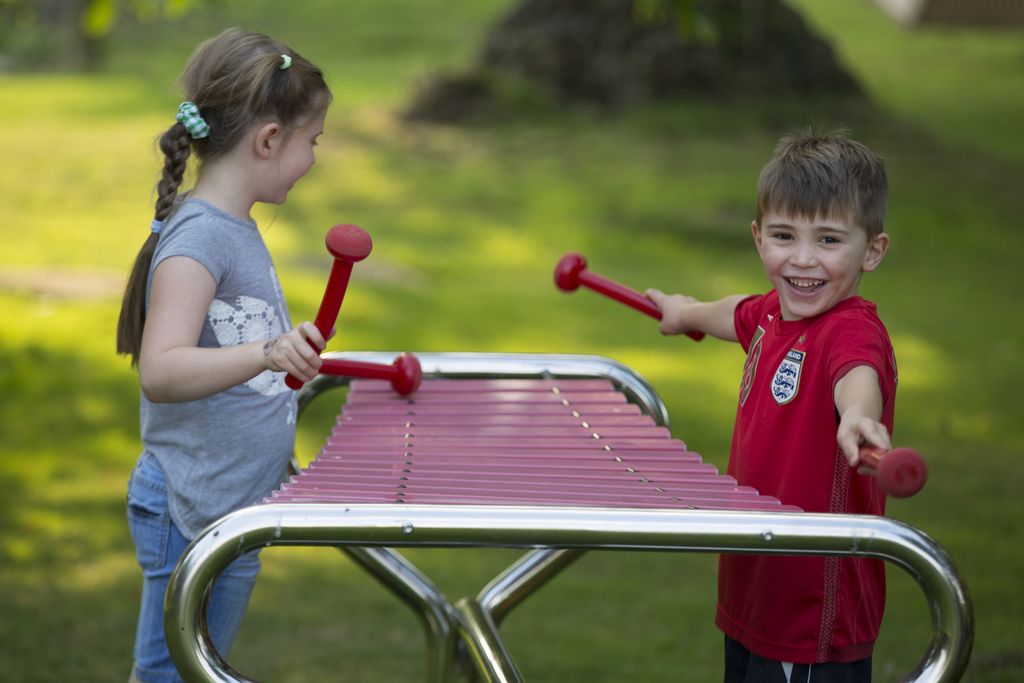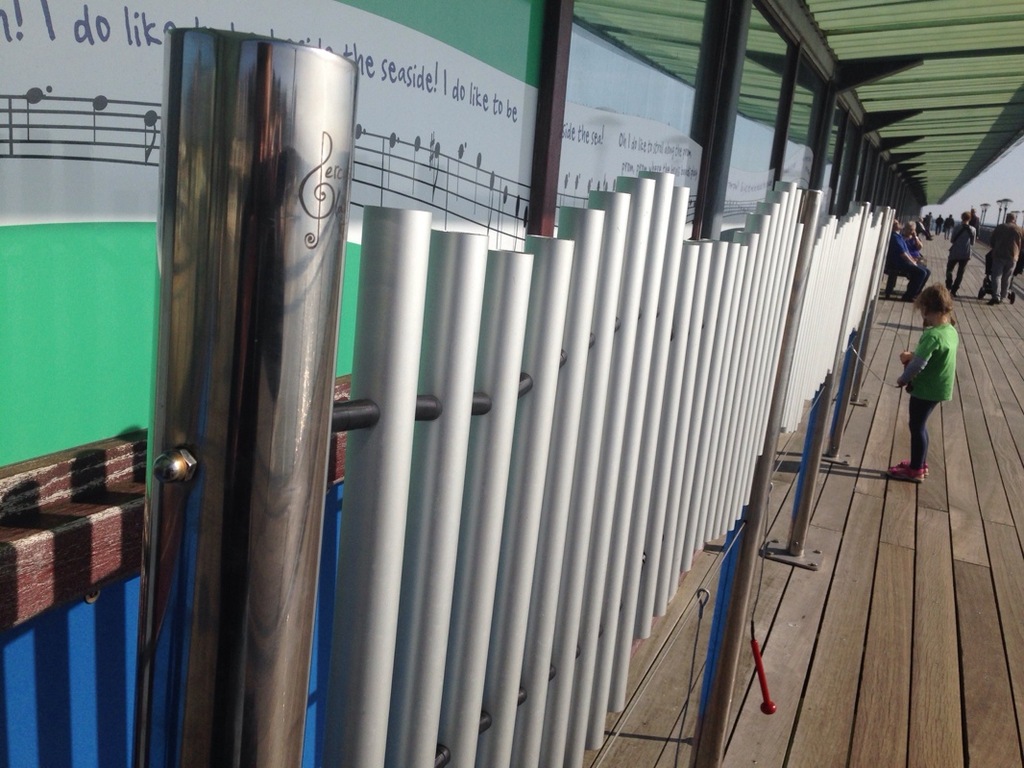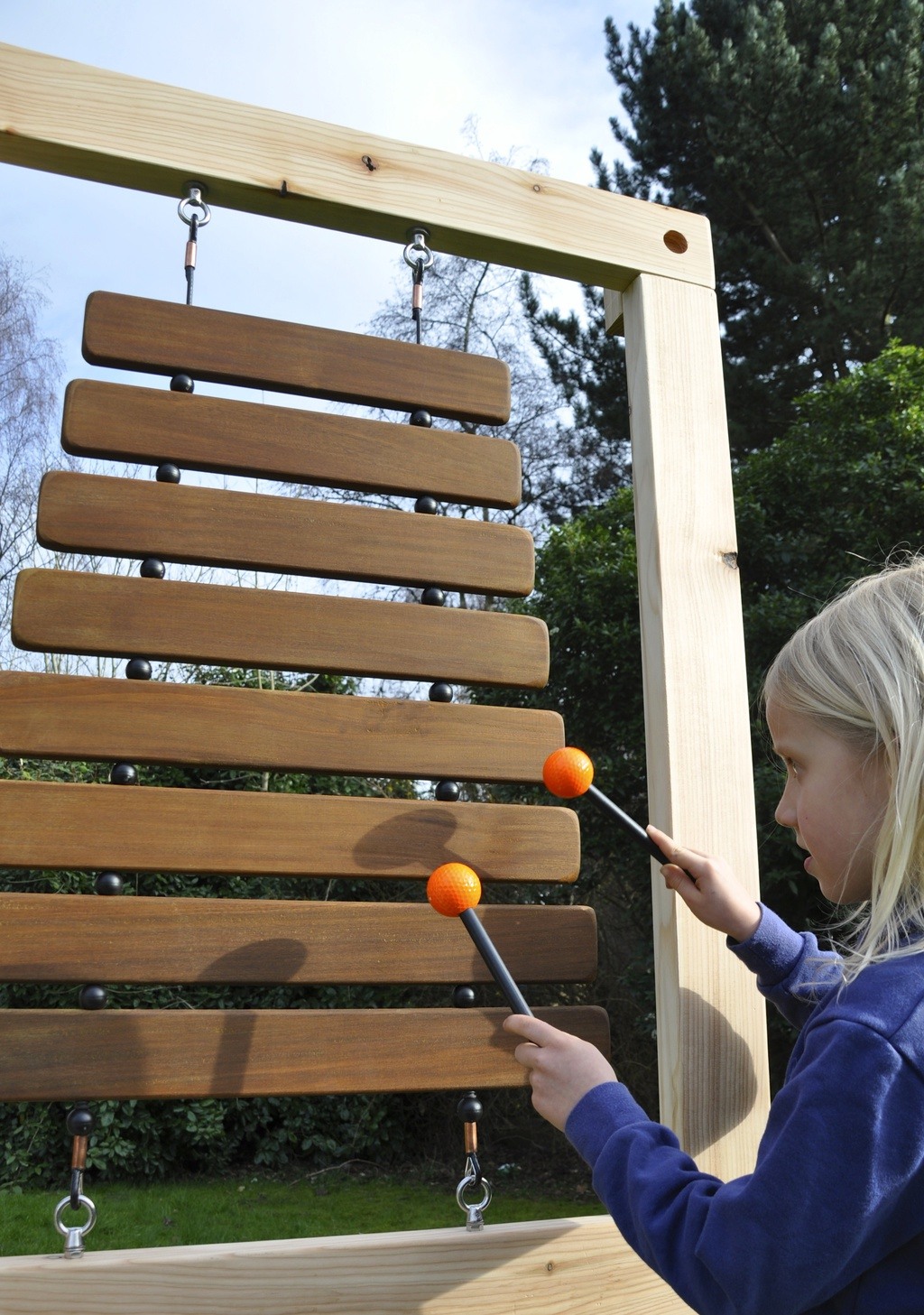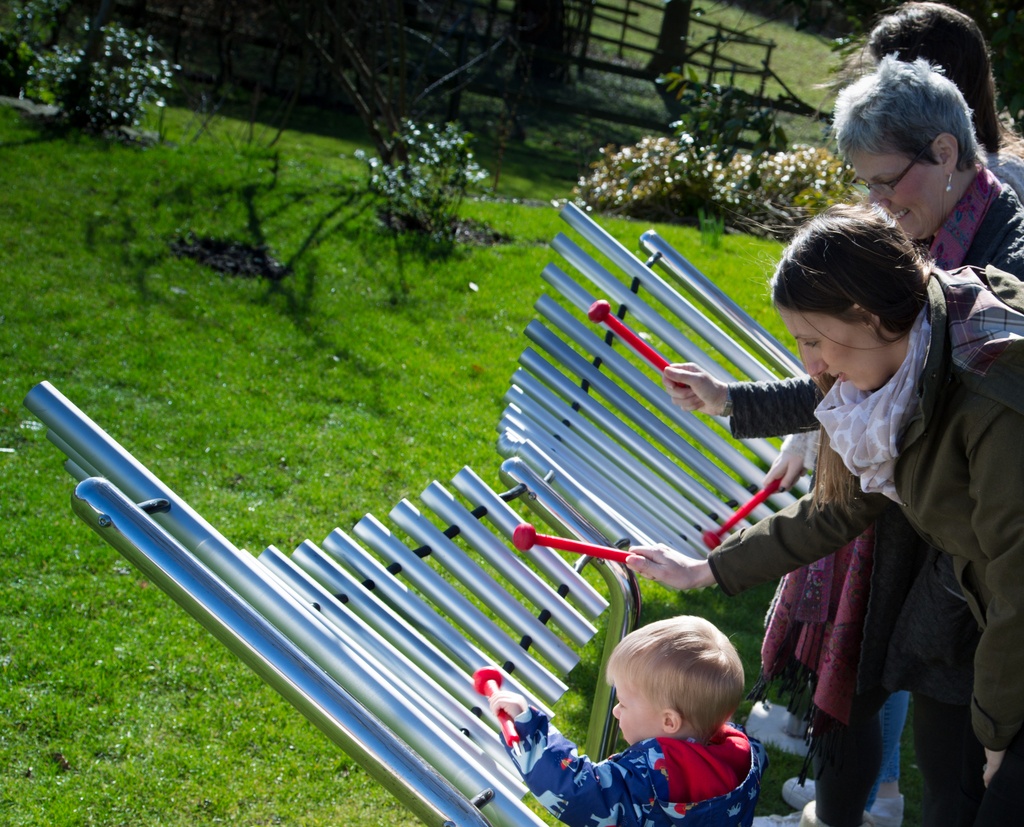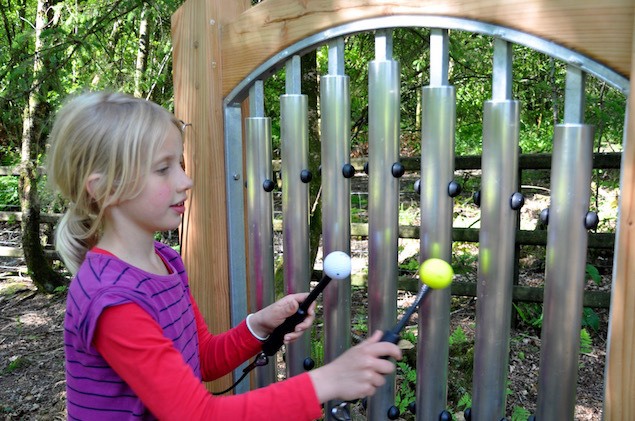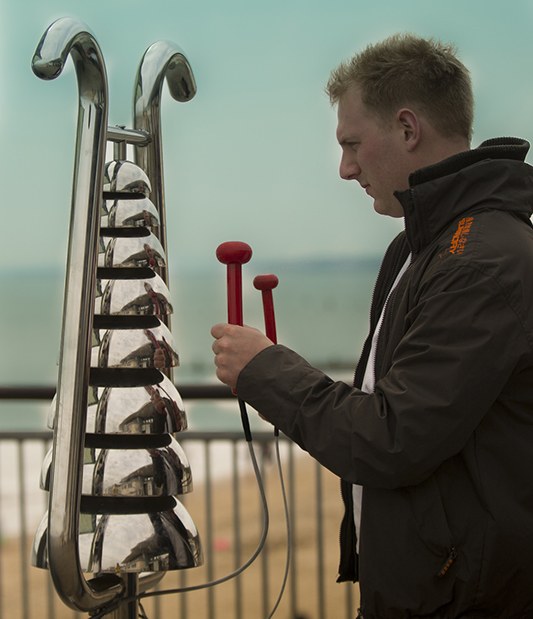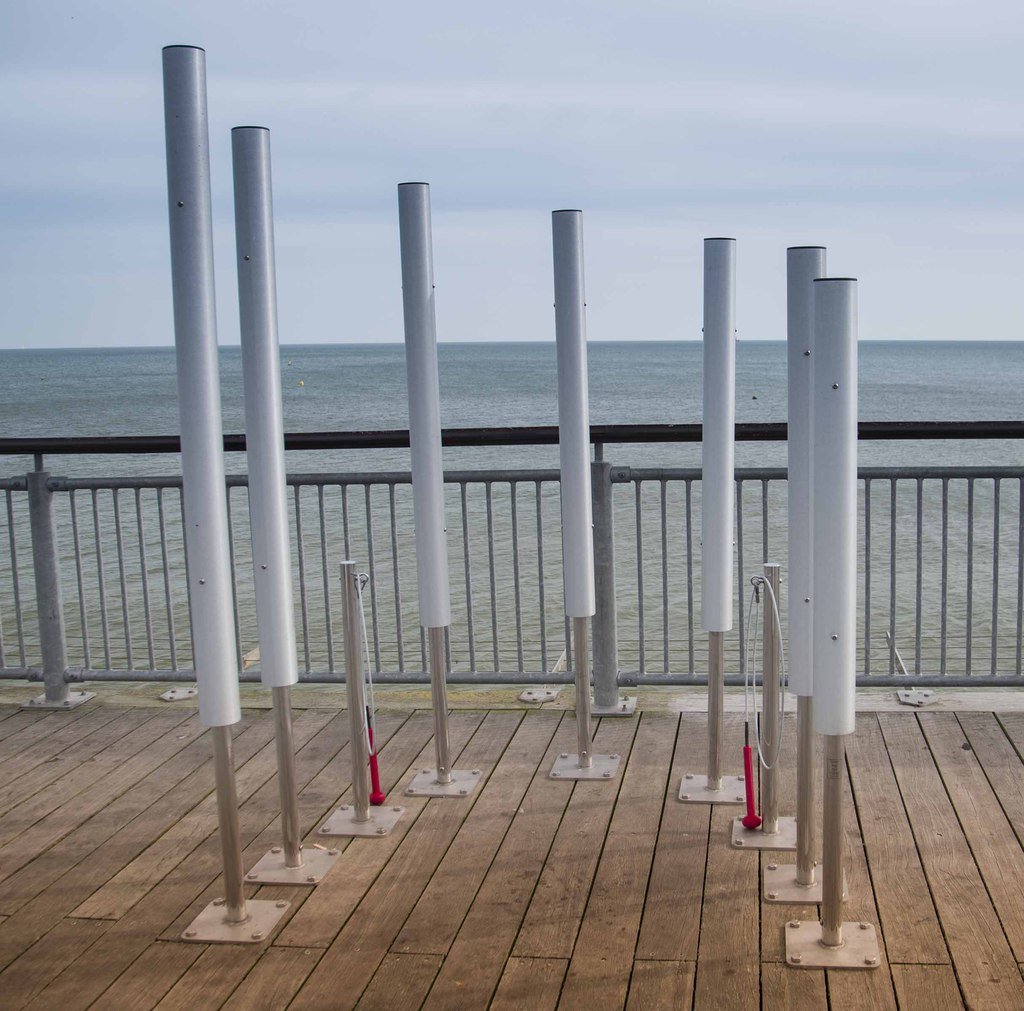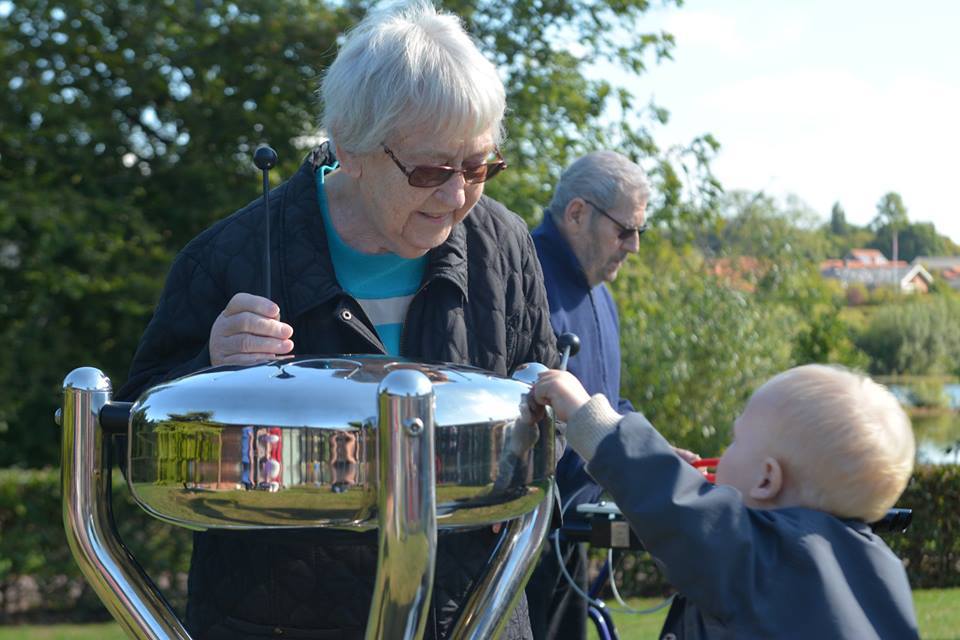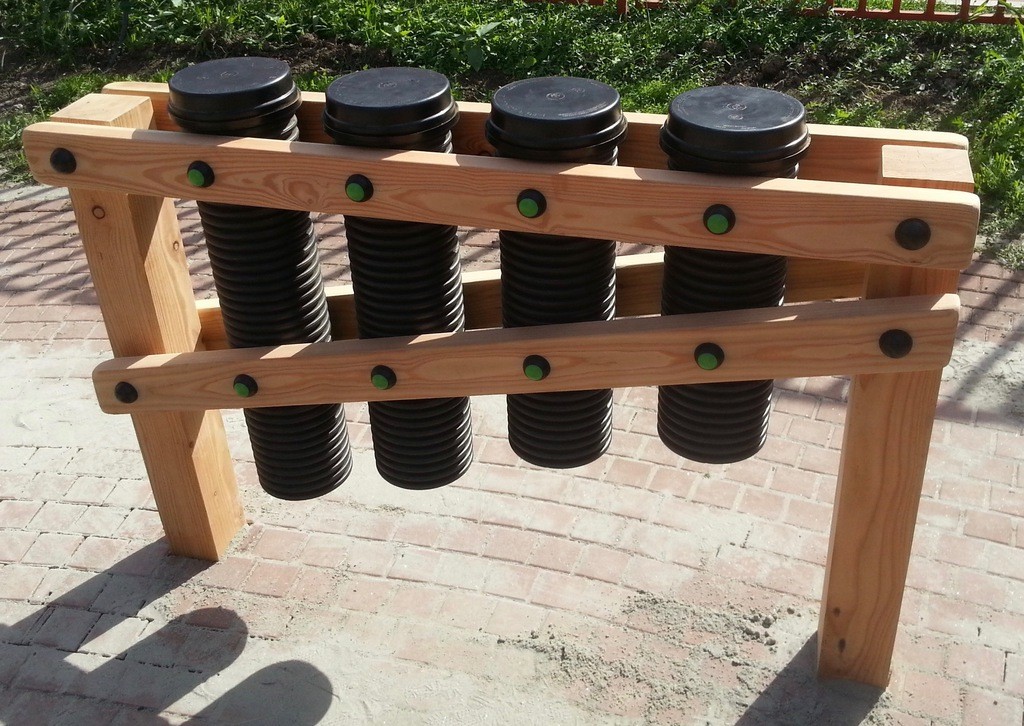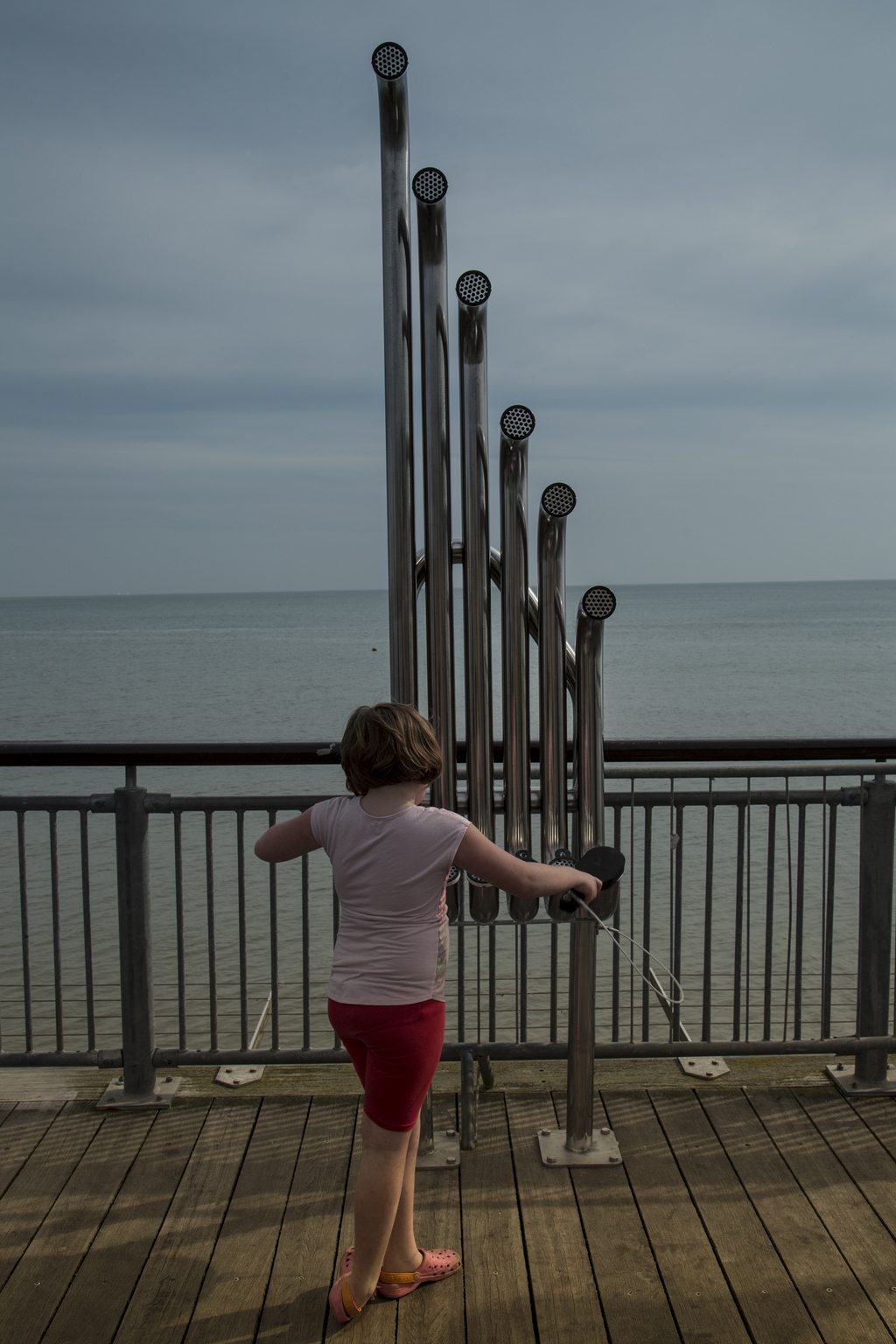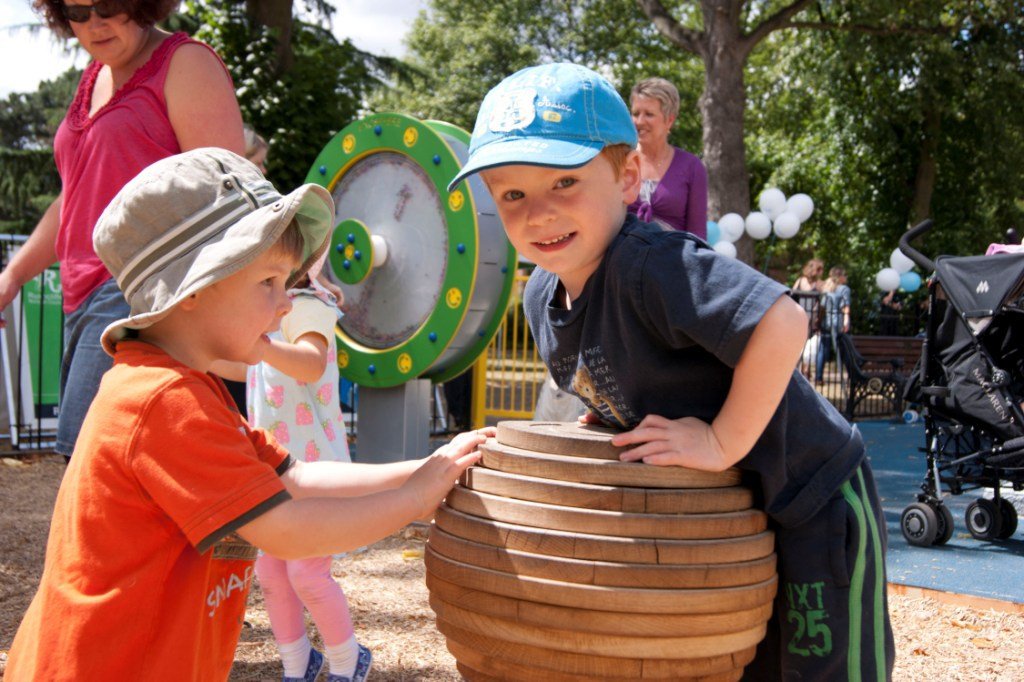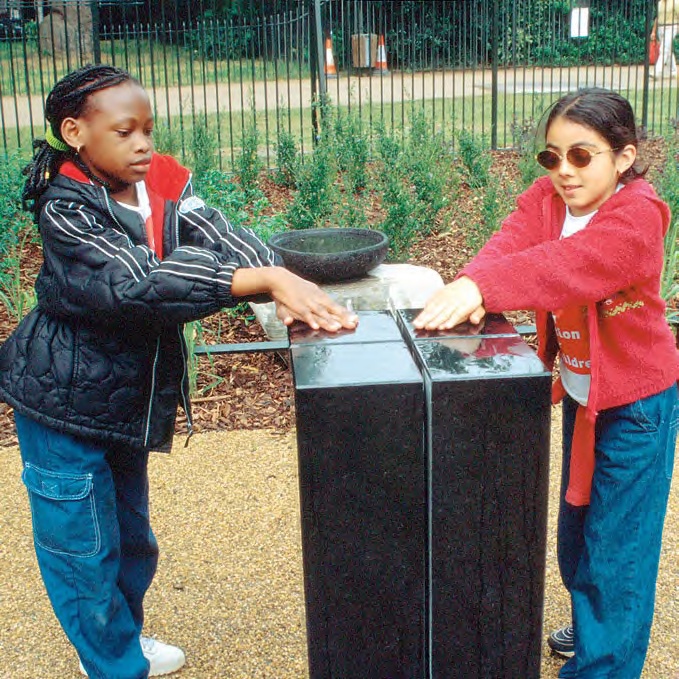What’s so great about outdoor musical instruments?
Music is a language shared by everyone, and every bit of evidence shows that playing music is good for us. We learn about ourselves and others by playing music together and listening. It’s a way to express feelings and to release energy; to lower stress and to increase cognitive skills. So when it comes to playing music outdoors, then surely outdoor musical instruments give us the best of two worlds? Getting out into the fresh air with all of the benefits of music thrown in.
Musical instruments are being installed in public places, designed for everyone to engage with. These beautiful instruments can brighten and energise all kinds of spaces where people gather, from public parks and sensory gardens, to schools, playgrounds, and care homes.
We can all enjoy the pleasures and the numerous benefits of music making. How about this one on Boscombe pier? Play along to, “Oh I do like to be beside the seaside!”
Percussion instruments produce sound when they are struck.
(From the Latin “percussio” – to beat or strike.)
Most big outdoor musical instruments are percussion instruments, as they are the simplest to play.
The original percussion instruments were people’s feet and hands, used to create stamping and clapping rhythms. Then came the realisation that louder and deeper sounds could be created by using different surfaces and objects.
Though they are the simplest and most primitive of musical instruments, there are many types to choose from: some are untuned and used for rhythm; others are tuned and can play melodies too.
Technically percussion instruments are divided into two groups.
1. Idiophones – the thing itself resonates when hit.
2. Membranophones – a skin or membrane resonates when hit.
Idiophones vibrate to make sounds when struck because they are made of a resonant material like wood or metal. The material the idiophone is made from affects the sound. For example, wood creates a softer sounding instrument and metal a sharper, more ringing one.
Wooden idiophone instruments:
- Xylophone (Greek for “wood sounder”) – technically every instrument that consists of a row of wooden bars of various lengths arranged according to pitch and struck with a mallet is a xylophone.
- Marimba – this is a larger, deeper toned xylophone of African origin. It has thinner bars made from softer wood than the xylophone so its timbre is softer and richer.
- Cajon – a wooden box-shaped drum that you sit on, played by slapping the front or rear face originally from Peru. It has no membrane, so it’s an idiophone.
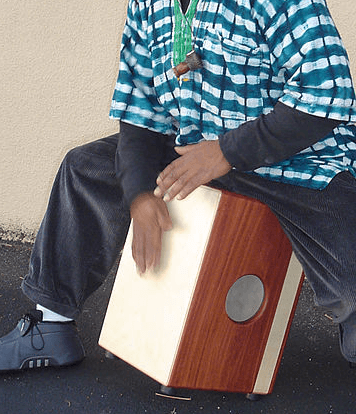
Wooden cajon drum
Metal idiophone instruments:
- Metallophones (metal idiophones) – are instruments made from tuned metal bars struck with a mallet. The glockenspiel (German for “bell play”), made from a set of tuned steel bars arranged according to pitch is a metallophone, as is any arrangement of metal bars and chimes.
- Individual chime bars or tubes.
- Bell lyres – this is a form of glockenspiel, played upright; traditionally found in marching bands.
- Tubular bells – hollow upright metal tubes which are struck with beaters to make notes.
- Steel tongue drums (also called babel drums) – are cut with tuned tongue shapes which make different notes when struck. Though these are drums, they produce sound by the vibration of the tongues not by a membrane, so they are idiophones. The tongue drum is one of the oldest known instruments and was originally made from tree trunks but it has been developed into versions with finely tuned intervals. Tongue drums have a primal melodic sound. (They can also be made from timber and from plastic as well as steel.)
Many tuned outdoor instruments are tuned to a pentatonic scale.
This is a five note scale of set intervals, like all the black notes on a piano. The pentatonic scale is universal across cultures. Research suggests that it may have its origins in the chant that children make instinctively, “Nah nah nah nah nah – I’m the king of the castle…” Most folk songs are set in a pentatonic key. The great thing about this scale is that you can improvise freely as all the notes sound good together – there are no “wrong” notes.
Membranophones
The second group of percussion instruments is called membranophones – which includes most kinds of drums.
These have hollow bodies covered by a stretched membrane that vibrates to make sounds when struck. The tighter the membrane, the higher the sound; also the larger the drum, the lower the pitch.
- Bongos, tom-toms and samba drums are the most common ones used for outdoor musical play.
- Drums can also be made from plastic pipes.
Aerophones
There is another category of musical instrument called the aerophones – these make sounds when air vibrates within them. Technically aerophones are instruments like flutes and other wind instruments but there are aerophones that create noise by vibrating air when they are hit and these are called “plosive aerophones”. So an aerophone that is plosive becomes a percussion instrument.
- There are all kinds of musically tuned sound pipes of different lengths and diameters which create a vibrating column of air when struck with a beater. These are often called paddle pipes.
Acoustic play is becoming increasingly popular and many musical and sensory play items are now available.
These include:
- Talking posts or talking stations which allow long distance conversations across a play area by means of underground tubes and a special sound distributor.
- Music balls, which play music when rolled and tilted.
- Musical stones which create resonant sounds when rubbed or hit.
Creating parks that contain easy to play, real musical instruments offer fun for young and old alike. Everyone can feel the joy that comes with creative self-expression.

